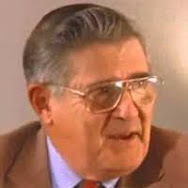In a hospital for surgery in Switzerland in 1944, the psychiatrist Carl G. Jung had a cardiac arrest and recalls this “near-death experience” [which occurred before Raymond Moody used this phrase to identify this experience while dying].
It seemed to me that I was high up in space. Far below I saw the globe of the earth, bathed in a gloriously blue light. I saw the deep blue sea and the continents. Far below my feet lay Ceylon, and in the distance ahead of me the subcontinent of India. My field of vision did not include the whole earth, but its global shape was plainly distinguishable and its outlines shone with a silvery gleam through that wonderful blue light. In many places the globe seemed colored, or spotted dark green like oxidized silver.
Far away to the left lay a broad expanse—the reddish-yellow desert of Arabia; it was as though the sliver of the earth had there assumed a reddish-gold hue. Then came the Red Sea, and far, far back—as if in the upper left of a map—I could just make out a bit of the Mediterranean. My gaze was directed chiefly toward that. Everything else appeared indistinct. I could also see the snow-covered Himalayas, but in that direction it was foggy or cloudy. I did not look to the right at all. I knew that I was on the point of departing from the earth.
Later I discovered how high in space one would have to be to have so extensive a view—approximately a thousand miles! The sight of the earth from this height was the most glorious thing I had every seen. Then Jung recalls: A short distance away I saw in space a tremendous dark block of stone, like a meteorite. It was about the size of my house, or even bigger. It was floating in space, and I myself was floating in space. I had seen similar stones on the coast of the Gulf of Bengal. They were blocks of tawny granite, and some of them had been hollowed out into temples. My stone was one such gigantic dark block.
As I approached the steps leading up to the entrance into the rock, a strange thing happened: I had the feeling that everything was being sloughed away; everything I aimed at or wished for or thought, the whole phantasmagoria of earthly existence, fell away or was stripped from me—an extremely painful process. Nevertheless something remained; it was as if I now carried along with me everything I had ever experienced or done, everything that had happened around me. I might also say: it was with me, and I was it. I consisted of all that, so to speak. I consisted of my own history and I felt with great certainty: this is what I am. I am this bundle of what has been and what has been accomplished.
The experience gave me a feeling of extreme poverty, but at the same time of great fullness. There was no longer anything I wanted or desired. I existed in an objective form; I was what I had been and lived. At first the sense of annihilation predominated, of having been stripped or pillaged; but suddenly that became of no consequence.
Everything seemed to be past; what remained was a ‘fait accompli,’ without any reference back to what had been. There was no longer any regret that something had dropped away or been taken away. On the contrary: I had everything that I was, and that was everything.
After he had recovered from his cardiac arrest, Jung wrote: I would never have imagined that any such experience was possible. It was not a product of imagination. The visions and experiences were utterly real.
We shy away from the word ‘eternal,’ but I can describe the experience only as the ecstasy of a non-temporal state in which present, past, and future are one. Everything that happens in time had been brought into a concrete whole. Nothing was distributed over time; nothing could be measured by temporal concepts. The experience might best be defined as a state of feeling, but one that cannot be produced by imagination.
How can I imagine that I exist simultaneously the day before yesterday, today, and the day after tomorrow? There would be things that would not yet have begun, other things that would be indubitably present, and others again which would already be finished and yet all this would be one. One is interwoven into an indescribably whole and yet observes it with complete objectivity.
“Carl G. Jung’s Near-Death Experience,” http://www.near-death.com/experiences/notable/carl-jung.html. An excerpt in van Lommel, Consciousness Beyond Life, 22-23. See Carl G. Jung, Memories, Dreams, Reflections, 289-90.














